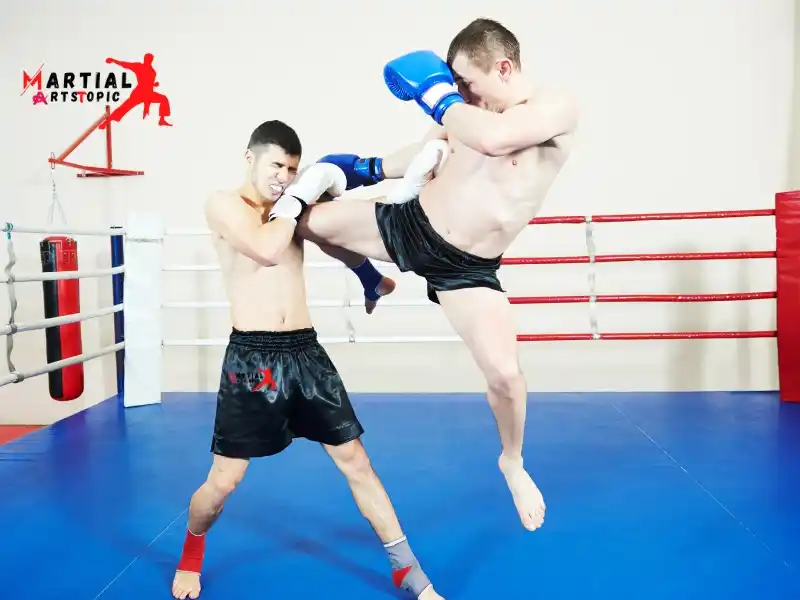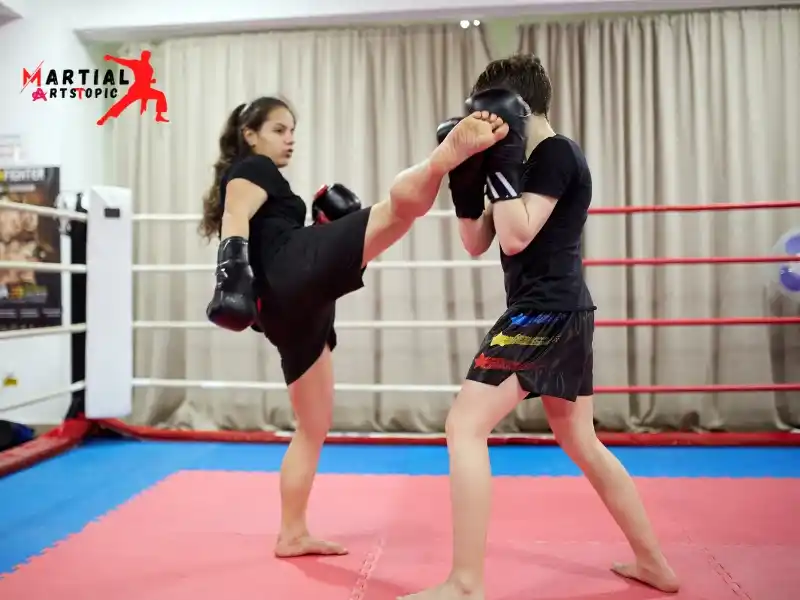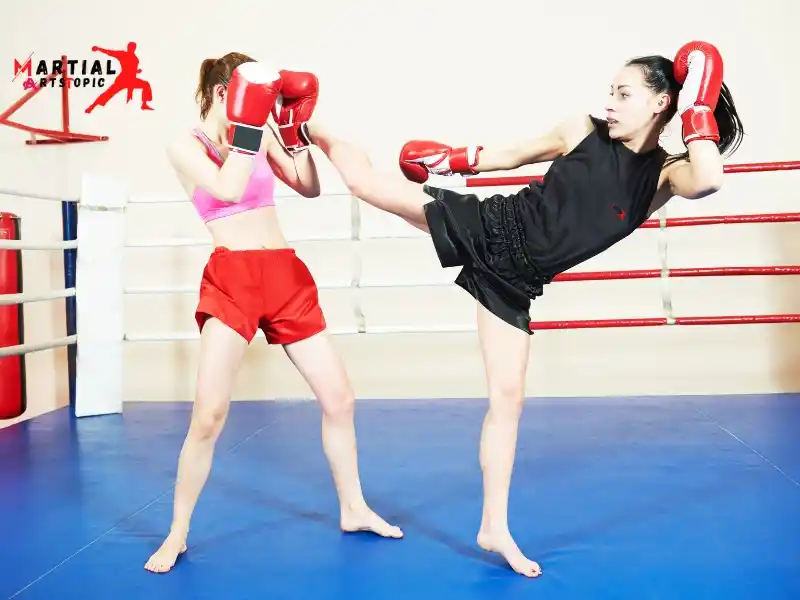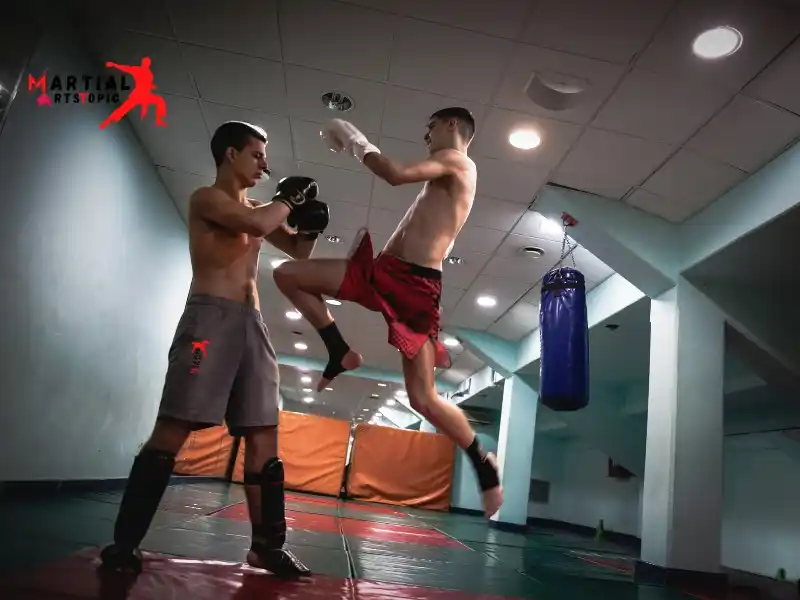
Unveiling the Power of French Kickboxing with Savate
What is Savate? Unveiling the Power of French Kickboxing with Savate are you ready to discover the exhilarating world of French kickboxing? Look no further than Savate, a martial art that combines elements of boxing with graceful kicking techniques.
Savate: A Brief History
First developed in France during the 19th century, Savate has a rich and storied history. Originally practiced by sailors and street fighters, it developed into a formalized discipline that emphasizes agility, speed, and precision. Today, Savate is not only a popular sport in France but has also gained recognition worldwide for its unique blend of striking techniques.
The Art of Savate: Techniques and Training
One of the most distinctive features of Savate is its emphasis on using the feet as weapons. Practitioners are trained to execute powerful kicks with precision and finesse, while also mastering hand strikes for close-range combat. The combination of footwork, flexibility, and striking sets Savate apart from other martial arts disciplines.
Training in Savate involves rigorous conditioning to develop strength, speed, and cardiovascular endurance. From perfecting high kicks to mastering evasive footwork, practitioners hone their skills through dedicated practice and discipline. Whether you’re a beginner or an experienced martial artist, the art of Savate offers endless opportunities for growth and improvement.
Unlocking Mental Focus and Discipline
Beyond physical prowess, training in Savate cultivates mental fortitude and discipline. The art demands concentration, quick thinking, and strategic execution during sparring sessions or competitive bouts. Through consistent practice, individuals develop heightened awareness, reflexes, and resilience—skills that transcend the boundaries of the training mat.
Why Choose Savate?
If you’re seeking an effective form of self-defense combined with an engaging fitness regimen, Savate offers a holistic approach to martial arts training. Its focus on striking techniques provides valuable skills for real-world scenarios while promoting overall physical fitness. Additionally, the mental challenges inherent in mastering complex combinations elevate it beyond mere exercise—it becomes a pursuit of personal growth.
What is Savate?
What is Savate? Savate, also known as French kickboxing, is a dynamic martial art that combines elements of traditional boxing with graceful kicks. Originating in France, Savate focuses on striking techniques using the hands and feet. It emphasizes agility, precision, and flexibility, making it an effective form of self-defense and a thrilling combat sport. With its unique blend of footwork and striking techniques, Savate offers a challenging yet rewarding training experience for practitioners of all skill levels.
The Origins of Savate in France

Savate traces its roots back to 19th-century France, where it emerged as self-defense among the working class in urban areas. The word “savate” itself comes from the French term for an old shoe, which reflects the art’s ancient practice of using footwear as a weapon. This distinctive feature sets Savate apart from other martial arts and highlights its historical significance within French society.
Initially developed by street fighters and sailors, Savate incorporated kicking techniques that were honed through practical combat experience. Over time, formalized training methods and techniques were established, leading to the structured discipline we recognize today. As Savate gained popularity, it also became known for its emphasis on agility, footwork, and precision strikes.
History of Savate
As time passed, Savate developed from street fighting into a structured martial art with its own set of rules and techniques. It gained popularity among both civilians and military personnel, leading to the establishment of formal training academies.
During the 20th century, Savate underwent further development with the introduction of codified rules for competitive bouts. This transformation elevated Savate from a practical means of self-defense to a recognized sport with international appeal.
Today, Savate is practiced worldwide, attracting individuals seeking an engaging form of physical activity that encompasses both striking techniques and agility training. Its historical roots are honored through traditional training methods while embracing modern innovations to ensure its relevance in contemporary society.
Evolution of Savate
Throughout its history, Savate has undergone significant evolution, transitioning from a practical self-defense art to a recognized sport with international appeal. The refinement of techniques and the establishment of standardized rules transformed Savate into a competitive martial art enjoyed by practitioners worldwide.
In modern times, Savate has continued to develop through cross-training with other combat disciplines and the incorporation of contemporary training methodologies. This adaptability has allowed Savate to maintain its relevance while preserving its traditional essence.
Basics of Savate
Savate, also known as French kickboxing, is a dynamic and elegant martial art that incorporates both kicking and punching techniques. It originated in France in the 19th century and has since gained popularity worldwide. Savate emphasizes agility, precision, and footwork, making it a unique and effective form of self-defense. Practitioners of Savate develop strength, flexibility, and coordination while learning to strike with power and accuracy. The sport provides a full-body workout while teaching valuable skills for personal protection.
Stances and Footwork in Savate
A fundamental aspect of mastering Savate is understanding the various stances and footwork techniques employed in this art form. The two primary stances in Savate are the “assaut” stance, which emphasizes mobility and agility, and the “combat” stance, which focuses on stability and power. Both stances play a crucial role in enabling practitioners to execute swift strikes while maintaining balance and control.
Footwork is integral to the fluidity and precision of Savate techniques. Practitioners are trained to move dynamically around their opponents, utilizing intricate footwork patterns to set up attacks or evade incoming strikes. By mastering the art of footwork in Savate, individuals can effectively control the distance between themselves and their adversaries while capitalizing on strategic angles for optimal striking opportunities.
Punches in Savate
Incorporating both traditional boxing techniques and unique elements specific to Savate, punches are an integral part of this martial art. Straight punches such as the jab and cross are utilized to maintain distance and set up kicking combinations. Additionally, angled punches like the uppercut are employed to exploit openings created by the opponent’s guard.
Kicks in Savate
Savate is renowned for its diverse array of kicks, which include both high and low variations. The front kick (coup de pied frontal) serves as a versatile tool for targeting an opponent’s midsection or legs with precision and power. Furthermore, the roundhouse kick (chassé) enables practitioners to unleash potent strikes from various angles, making it an indispensable component of Savate’s offensive arsenal.
Strikes Used in Savate
Beyond punches and kicks, Savate incorporates striking techniques that emphasize speed and accuracy. The use of open-handed strikes such as slaps or hooks allows practitioners to exploit vulnerabilities in an opponent’s defense while maintaining a level of control over their attacks. These dynamic strikes complement the kicking and punching components of Savate, enhancing its effectiveness as a comprehensive martial art form.
Techniques for Savate

Savate, also known as French kickboxing, is a dynamic martial art that incorporates a variety of kicking techniques. Practitioners of Savate are renowned for their agility and precision in delivering powerful strikes using their legs. The techniques for Savate focus on developing strength, flexibility, and speed to execute swift and effective kicks. Emphasizing both offensive and defensive maneuvers, these techniques are designed to provide practitioners with the skills necessary for self-defense and competitive sparring.
- Chassé Frontal (Front Kick): The chassé frontal is a fundamental technique in Savate, involving a powerful front kick delivered with the ball of the foot. This technique focuses on precision and speed, making it an effective tool for both offense and defense.
- Revers (Side Kick): The revers is a dynamic side kick that enables practitioners to generate significant power while maintaining balance and stability. Mastering the revers requires proper hip rotation and precise foot positioning to deliver maximum impact.
- Fouetté (Roundhouse Kick): The fouetté is a versatile roundhouse kick commonly used in Savate to target an opponent’s midsection or head. It demands agility and flexibility to execute effectively while maintaining control over distance and timing.
- Direct Bras Avant (Straight Punch): The direct bras Avant is a straight punch designed to deliver rapid bursts of force with accuracy. Emphasizing proper shoulder alignment and wrist positioning, this technique allows practitioners to unleash quick and decisive strikes.
- Défense Dans La Rue (Street Defense): Beyond traditional kicks and punches, Savate incorporates practical self-defense techniques tailored for real-world situations. Défense dans la rue focuses on evasive maneuvers, clinch work, and close-quarters combat strategies.
- Pas de Bourrée (Shuffle Step): Footwork plays a crucial role in Savate, and the pas de bourrée shuffle step enables swift movement while maintaining balance and readiness to launch attacks or evade incoming strikes.
- Combinations (Combinations): Effective combinations are key to success in Savate sparring or competition. By fluidly integrating various kicks and punches into cohesive sequences, practitioners can keep opponents guessing and create openings for strategic strikes.
- Enchainment (Flurry of Strikes): Rapid-fire enchainments showcase the speed and precision inherent in Savate techniques, overwhelming opponents with relentless barrages of kicks and punches while staying light on the feet.
Training and Conditioning for Savate
Training and conditioning for Savate, also known as French kickboxing, is essential for developing the strength, agility, and flexibility required for this dynamic martial art. Incorporating a combination of cardiovascular exercises, plyometric drills, and resistance training can help improve your overall fitness level and enhance your kicking techniques. Additionally, focusing on specific muscle groups such as the core, legs, and shoulders can significantly boost your performance in Savate.
Training Tips for Savate
- Focus on Technique: Precision and finesse are key components of Savate techniques. Dedicate ample time to perfecting your form through repetition and attention to detail.
- Partner Drills: Engage in partner drills to enhance your timing, distance management, and defensive maneuvers. This will simulate real-life sparring situations and improve your overall performance.
- Shadow Boxing: Utilize shadow boxing as a means to practice combinations and footwork without physical contact with an opponent. This allows you to concentrate on fluidity and speed in your movements.
- Mental Conditioning: Develop mental fortitude through visualization exercises and meditation practices. Cultivating a focused mindset will enhance your ability to strategize during bouts.
- Consistency: Consistent training is vital for progress in Savate. Establish a regular training schedule that encompasses both conditioning workouts and technical drills.
Conditioning Techniques for Savate
- Cardiovascular Endurance: Engage in cardiovascular exercises such as running, cycling, or high-intensity interval training (HIIT) to build stamina and endurance. Improved cardiovascular fitness will enable you to sustain high-intensity rounds during sparring sessions or competitions.
- Strength Training: Implement strength training exercises focusing on the lower body, core, and upper body muscles involved in striking techniques. Squats, lunges, push-ups, and core strengthening exercises are beneficial for developing overall strength.
- Plyometric Drills: Plyometric exercises like box jumps, explosive lunges, and medicine ball throws can enhance explosive power in kicks and punches while also improving overall athleticism.
- Interval Training: Integrate interval training sessions that simulate the intensity of actual sparring matches. Alternate between periods of high-intensity striking combinations with brief rest intervals to mimic the demands of Savate bouts.
Benefits of Practicing Savate
Practicing Savate offers a multitude of benefits for both the body and mind. This French martial art, also known as French kickboxing, combines elements of boxing with graceful kicking techniques. Regular training in Savate enhances cardiovascular fitness, agility, and flexibility while improving lower body strength. Additionally, it cultivates mental discipline and focus as practitioners learn to execute precise strikes and swift footwork. The dynamic nature of Savate provides a holistic workout that challenges the body and sharpens the mind. Embracing Savate can lead to improved physical conditioning, heightened self-confidence, and a deeper understanding of self-defense strategies.
Physical Benefits
- Cardiovascular Fitness: Engaging in Savate training sessions provides an excellent cardiovascular workout, helping to improve heart health and stamina.
- Full-Body Workout: The combination of punches, kicks, footwork, and defensive movements in Savate ensures that all major muscle groups are engaged, promoting overall strength and flexibility.
- Weight Management: Regular practice of Savate can assist in weight management by burning calories and toning muscles.
- Coordination and Balance: The intricate footwork and precise striking techniques in Savate contribute to improved coordination, reflexes, and balance.
Mental Benefits
- Focus and Concentration: Mastering the techniques of Savate requires mental discipline and focus, which can translate into improved concentration in daily life.
- Stress Relief: The intensity of training sessions allows practitioners to release stress and tension, promoting mental relaxation and clarity.
- Self-Confidence: As proficiency grows in Savate, practitioners often experience increased self-confidence both inside and outside the training environment.
- Discipline: The structured nature of Savate training instills discipline and perseverance, fostering a strong work ethic.
Emotional Benefits
- Empowerment: Learning self-defense skills through practicing Savate can empower individuals by enhancing their sense of safety and security.
- Camaraderie: Joining a community of fellow Savate enthusiasts can create a strong support network that fosters friendships and camaraderie.
- Emotional Regulation: Through consistent practice, individuals may develop better emotional regulation skills when faced with challenging situations.
Fighting Styles for Savate

Savate, also known as French boxing, is a dynamic fighting style that emphasizes powerful kicks and precise footwork. Originating in France, Savate incorporates elements of Western boxing with high kicks using the feet and legs. This unique combination of techniques makes it a formidable martial art for both self-defense and competitive fighting. Practitioners of Savate develop strength, agility, and flexibility while mastering striking techniques with their hands and feet. The emphasis on kicking sets Savate apart from other martial arts, making it an excellent choice for those looking to diversify their combat skills.
Now, let’s inspect some key techniques used in Savate:
- Pieds Poings (Kicks and Punches): Savate practitioners utilize an array of kicks and punches to engage their opponents from various distances. From high kicks to low sweeps, each technique is executed with fluidity and speed.
- Chassé (Side Kick): This signature move involves striking the opponent’s torso or head with a swift sideways kick. The Chassé requires precise timing and control to maximize its effectiveness.
- Fouetté (Whip Kick): The Fouetté is a rapid whipping motion kick aimed at the opponent’s lower body or legs. It allows for quick redirection of force while maintaining distance from the opponent.
- Retrait (Retreat): Movement plays a crucial role in Savate, and Retrait refers to stepping back or sidestepping strategically to create openings for counterattacks.
Conclusion
What is Savate? Savate is a unique and dynamic martial art that combines elements of kicking and striking techniques with agility and footwork. Its rich history and emphasis on both self-defense and physical fitness make it a valuable discipline for practitioners of all levels. Whether you’re interested in honing your combat skills, improving your physical conditioning, or simply exploring a new form of martial arts, Savate offers a rewarding journey filled with challenges and personal growth. Embrace the spirit of Savate, and let its principles inspire you on your path to mastery.
